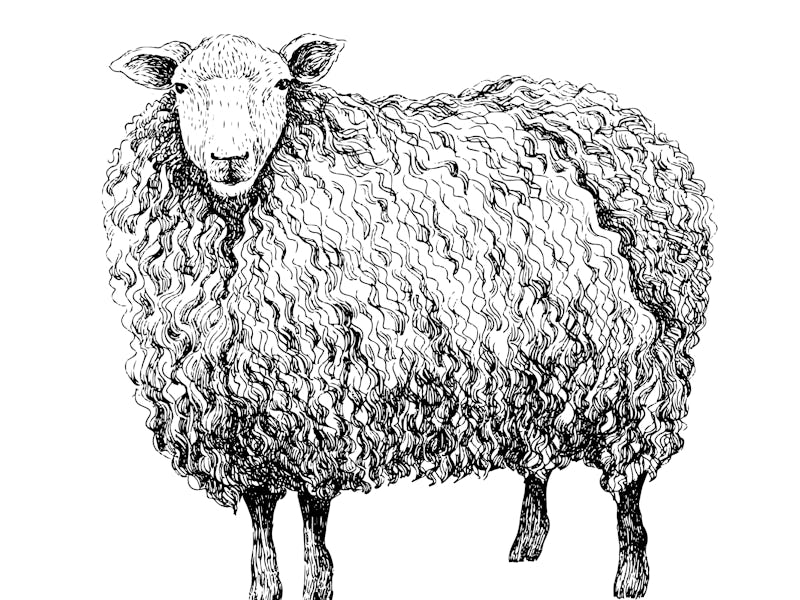This is a sheep's brain on ketamine
Drugged sheep could be the future of treatments for depression.

Sheep have a long history of helping solve scientific mysteries about how our bodies and brains work. In 1996, Dolly made headlines as the first cloned mammal from an adult cell. And in 2020, scientists continued the starry legacy of ovine research when they drugged 12 sheep with ketamine.
In a study published this June in the journal Scientific Reports, researchers performed electroencephalography, or EEG, brain scans on 12 sheep and observed how their brain activity changed under different doses of the dissociative anesthetic and rave drug ketamine.
Their reasoning was not idle. Their experiment could ultimately have huge implications for how scientists go on to understand the dissociative effects, and therapeutic benefits, of this drug in humans.
INVERSE IS COUNTING DOWN THE 20 STORIES THAT MADE US SAY 'WTF' IN 2020. THIS IS NUMBER 5. SEE THE FULL LIST HERE.
The team was shocked by what they found, including that brain activity in the cerebral cortex activity stopped altogether under some dosages.
Here's the background — Originally used as an animal anesthetic, ketamine became popular as a party drug thanks to its ability to induce a dissociative state, or so-called "k-hole," in humans. Many have described this experience as feeling separation of body and mind.
But in more recent years, scientists have been actively studying how this drug-induced dissociative state may be used as a therapy, especially for treating otherwise drug-resistant forms of depression.
But there's a catch: scientists still don't have a good understanding of what exactly is going down in the brain to cause these dissociative states.
That's where the sheep come in.
This sudden drop in brain waves could be evidence of sheep experiencing a "k-hole"
What they did — Over the course of several months, researchers gave 12 sheep escalating doses of ketamine, from 0.5 mg/kg to 24 mg/kg, and used an EEG cap to capture their brain activity while on the drugs.
What they discovered — Looking at how the sheep responded to the drug, the team identified three different unique stages of behavior:
- Shortly after taking the drug, the sheep lost all ability to move aside from blinking their eyes
- Still immobile, the sheep could now respond to touch
- Their brains were "awake," but they still didn't move their bodies
When making their observations, researchers noticed a striking pattern of brain activity in sheep taking the highest doses. During this second stage, activity in their cerebral cortex — typically a chatty part of the brain — seemed to vanish altogether.
“The activity in the cortex in some of the sheep stops completely for a short time. But the brain is NOT dead or damaged,” Jenny Morton, the lead study author and a professor of neurobiology at the University of Cambridge, told Inverse.
This unexpected blip in the sheep's brain activity may be neurological evidence of a k-hole, the researchers speculate.
While scientists are still working to learn more about this drug's effect on the brain, this research takes us one step closer to understanding what causes dissociative states and hopefully toward much-needed therapeutic treatments.
INVERSE IS COUNTING DOWN THE 20 STORIES THAT MADE US SAY 'WTF' IN 2020. THIS IS NUMBER 5. READ THE ORIGINAL STORY HERE.